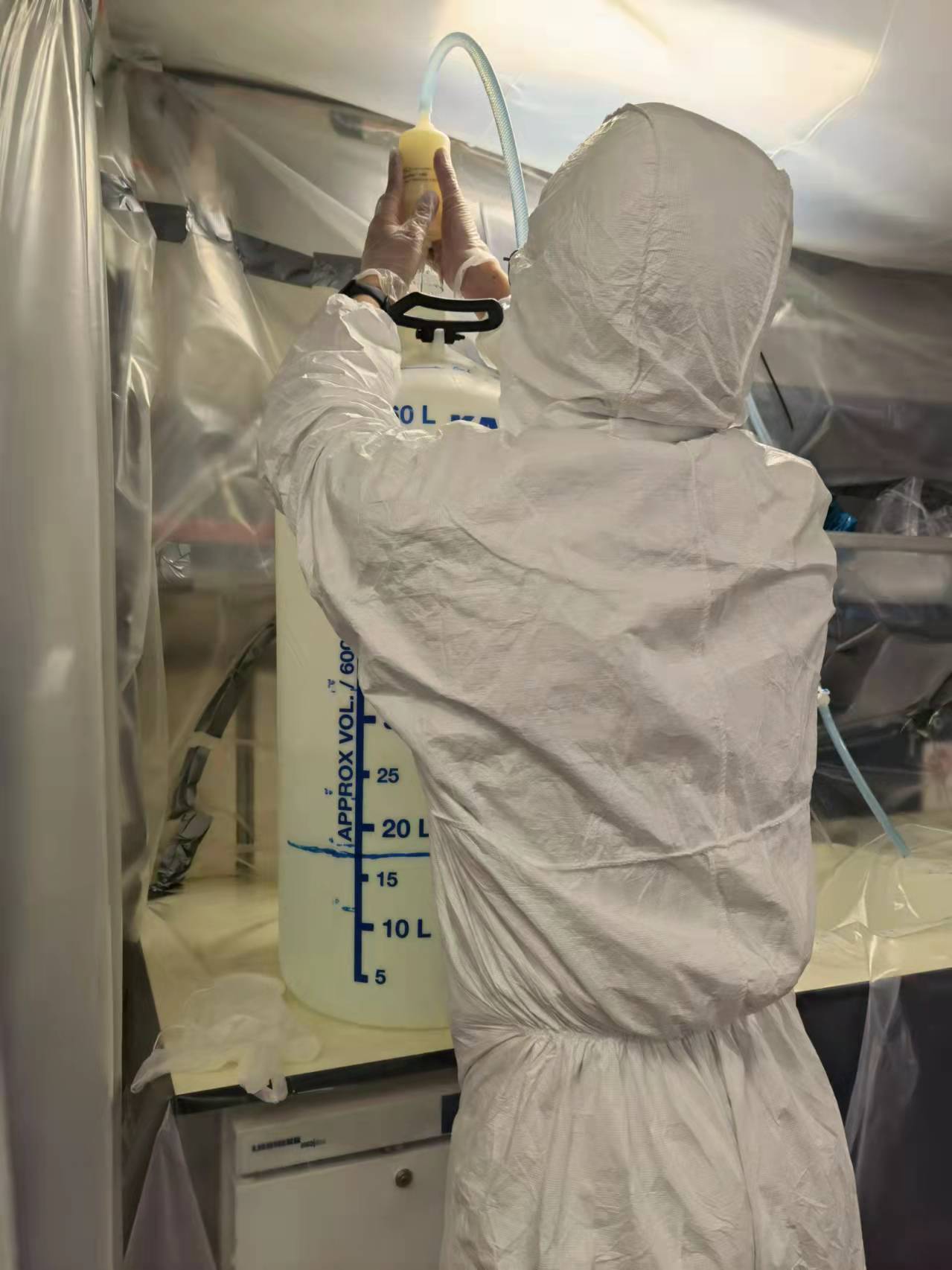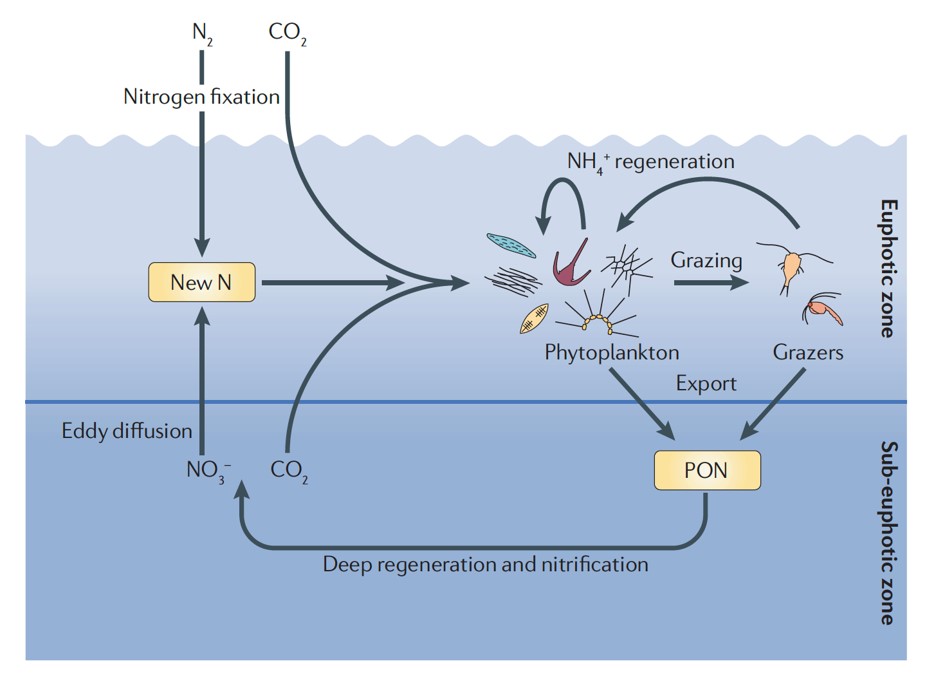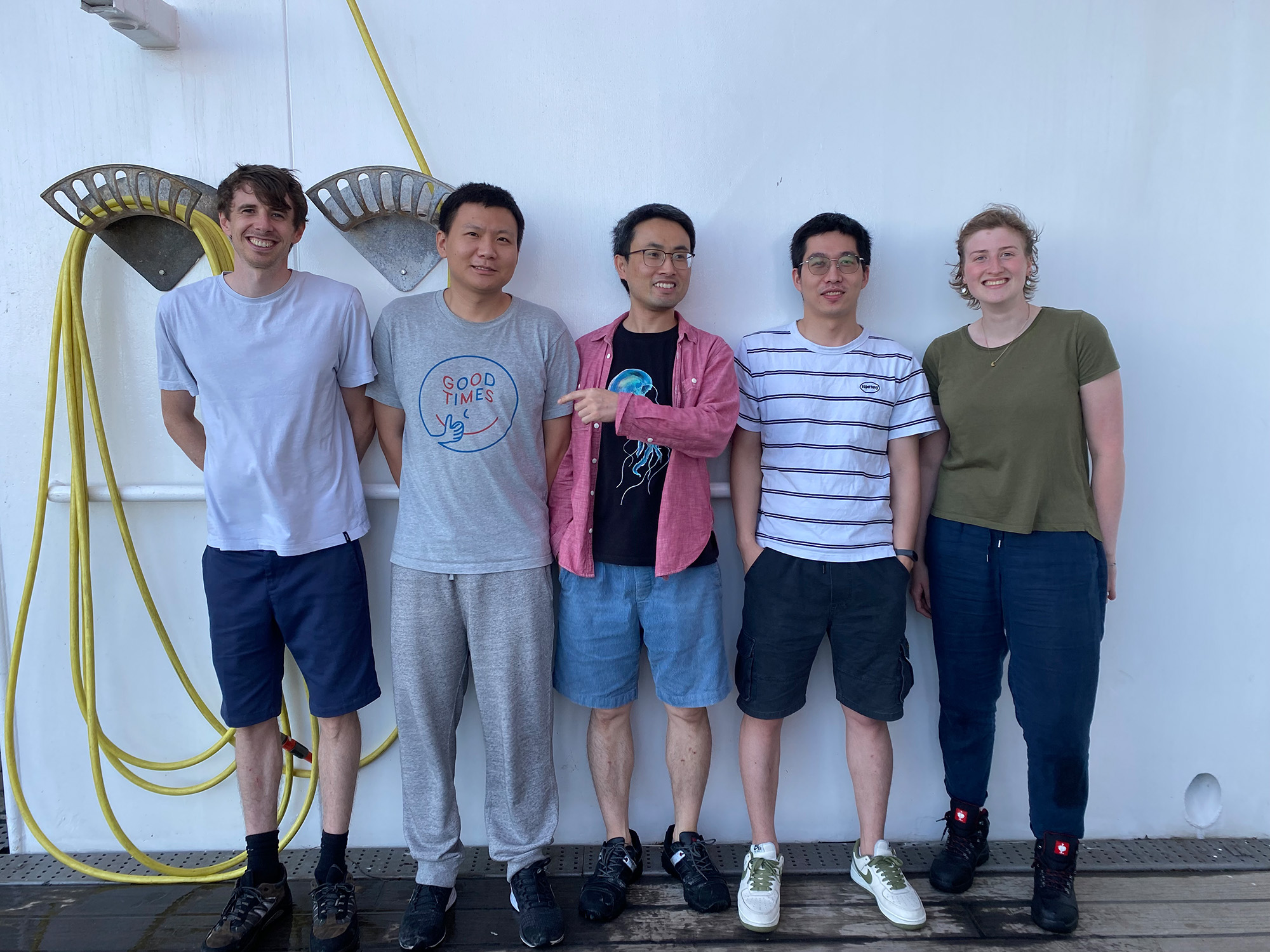(deutsche Version unten)
This is the second scientific cruise that I joined since my arrival at GEOMAR in 2021. This time we flew to Valparaiso, Chile and boarded the German research vessel RV SONNE, and started our journey across the entire South Pacific to New Caledonia. On this cruise, SO289, which is part of the International GEOTRACES Programme, our biology team aims to conduct systematic research on phytoplankton diversity, biological activities, their biogeographic distributions and their controlling factors in the upper sunlit ocean (upper 200 metres).
I am a postdoctoral researcher supported by both GEOMAR and XIAMEN University (China), and my work focuses on nitrogen (N2) fixing microorganisms (diazotrophs) in the oceans. These microorganisms are important species and convert N2 gas into bioavailable ‘new’ N and thereby support the productivity in the oligotrophic South Pacific Ocean (see Figure 1).
Despite their importance, a mechanistic understanding of what controls the distribution of diazotrophs and associated N2 fixation rates in the current ocean is still lacking, presenting a major barrier to making accurate projections of N2 fixation in a future ocean impacted by climate change. To address this, I conduct N2 fixation rate incubations, and DNA sampling for the analysis of the abundances of key diazotrophic phylotypes during this cruise. These efforts are also accompanied by a diverse range of ancillary environmental parameters, alongside several nutrient amendment experiments directly testing the response of N2 fixation rates to supply of potentially limiting nutrients (iron and phosphate).
Reference: Sohm, J. A. Webb, E. A. Capone, D. G. Emerging patterns of marine nitrogen fixation. 2011, Nat. Rev. Microbiol. 9(7): 499-508.
Zhongwei Yuan, RV SONNE

Biologische N2-Fixierung im subtropischen Südpazifik
Dies ist die zweite wissenschaftliche Expedition, an der ich seit meiner Ankunft am GEOMAR im Jahr 2021 teilgenommen habe. Diesmal flogen wir nach Valparaiso, Chile, und gingen an Bord des deutschen Forschungsschiffs FS SONNE, um unsere Reise über den gesamten Südpazifik nach Neukaledonien zu beginnen. Auf dieser Kreuzfahrt, SO289, die Teil des internationalen GEOTRACES-Programms ist, will unser Team die Phytoplankton-Vielfalt, die biologischen Aktivitäten, ihre biogeografische Verteilung und die sie beeinflussenden Faktoren im oberen sonnenlicht-durchschienenen Ozean (bis 200 Meter Tiefe) systematisch erforschen.
Als Postdoktorand, der sowohl vom GEOMAR als auch von der XIAMEN-Universität (China) unterstützt wird, konzentriere ich mich auf Stickstoff-fixierende Mikroorganismen (Diazotrophe) in den Ozeanen. Diese Mikroorganismen sind wichtige Arten, die gasförmigen Stickstoff (N2) in bioverfügbaren “neuen” Stickstoff umwandeln und damit die Produktivität im oligotrophen Südpazifik fördern (siehe Abbildung 1).
Trotz ihrer Bedeutung fehlt noch immer ein mechanistisches Verständnis darüber, was die Verteilung der Diazotrophen und die damit verbundenen N2-Fixierungsraten im heutigen Ozean steuert. Dies stellt ein großes Hindernis für genaue Prognosen der N2-Fixierung in einem zukünftigen Ozean dar, der vom Klimawandel betroffen ist. Um dieses Problem anzugehen, führe ich während dieser Fahrt Inkubationen mit N2-Fixierungsraten und DNA-Probenahmen zur Analyse der Häufigkeit wichtiger diazotropher Phylotypen durch. Begleitet werden diese Arbeiten von einer Reihe von zusätzlichen Umweltparametern sowie von mehreren Experimenten zur Nährstoffveränderung, bei denen die Reaktion der N2-Fixierungsraten auf die Zufuhr potenziell limitierender Nährstoffe (Eisen und Phosphat) direkt getestet wird.

